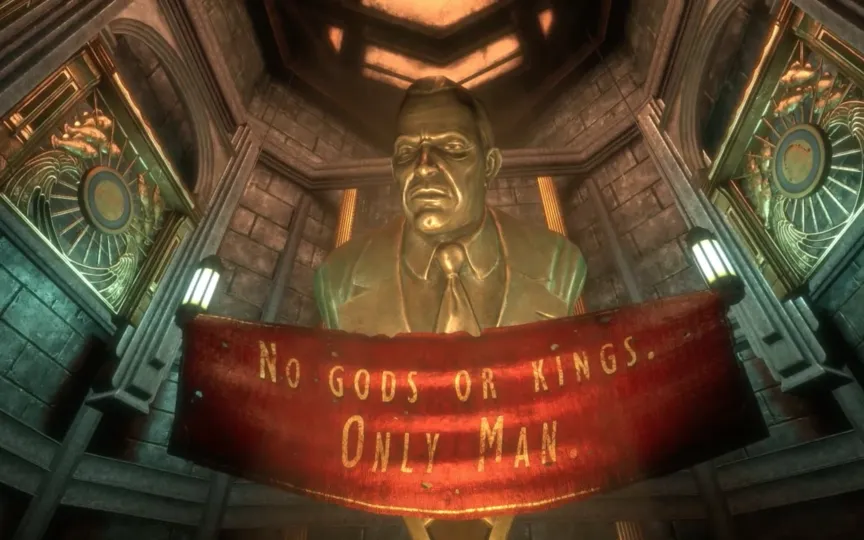Exploring the Possibility of Crafting the Ultimate Video Game: A Look at Why We Haven’t Achieved ‘Citizen Kane’ Status Yet
After its release in 1982, Steven Spielberg’s heartwarming science fiction masterpiece, E.T. the Extra-Terrestrial, quickly became a significant part of popular culture. However, the Atari 2600 video game adaptation, which was rushed to market within a mere five weeks, gained its own cultural significance for entirely different reasons.
In his new book The Stuff Games Are Made Of, experimental game maker and assistant professor of design and computational arts at Concordia University in Montreal, Pippin Barr deconstructs the game design process, using an octet of his own past projects to shed light on certain aspects. how games could be put together better. In the excerpt below, Dr. Barr discusses what makes a good movie versus a game, and why the storytelling goals of the two mediums may not align.

Excerpted from The Stuff Games Are Made Of by Pippin Barr. Reprinted with permission from The MIT Press. Copyright 2023.
In the Atari 2600 video game version of the movie E.T. In The Extra-Terrestrial (Spielberg 1982), also called E.T. The Extra-Terrestrial (Atari 1982), the defining experience is falling into a pit. So it’s outrageously fitting that hundreds of thousands of physical cartridges of the game were buried in a landfill in 1983. Why? It was one of the most spectacular fails in video game history. Why? It is often placed front and center as the worst game of all time. Why? Well, when you play it, you keep falling into a pit, e.g.
But was the video game E.T. so terrible? In many ways, it was starved of the video game industry’s voracious “sure fire” blockbusters. One strategy was to adapt already popular movies like Raiders of the Lost Ark or, yes, E.T. extraterrestrial. Rushed to market with just five weeks of development time, the game inevitably lacked the meticulous action-oriented gameplay backed by audience testing that other Atari titles had. However, I would argue that its creator, Howard Scott Warshaw, found his way to a truer depiction of the film’s essence than one might expect.
Yes, in the game E.T. keeps falling into pits as he escapes scientists and government agents. Yes, the game is confusing when it comes to understanding what to do, with confusing symbols and unclear objectives. But on the other hand, doesn’t this make for a more poignant depiction of E.T.’s experience stranded on an alien planet trying to get home? What if E.T. The Extra-Terrestrial is a good movie adaptation, and just an unpopular video game?
The world of video games has admired the world of cinema since the beginning. This has led to a long-running debate between game design and the audio-visual language of the film, from cutscenes to narration to fade-ins and more. In this sense, movies are one of the most important materials from which games are made. However, even the modern dominance of video games in the revenue competition has not been enough to calm the nagging feeling that the games just aren’t competent. Roger Ebert famously (and rather arrogantly) argued that video games can never be art, and while we can mostly laugh it off now that we have games like Kentucky Route Zero and Disco Elysium, it still hurts. What if Ebert was right that video games aren’t as good at being art as film?
Art has rarely been on the minds of game studios when making film adaptations. From Adventures of Tron for Atari 2600 to Toy Story Drop! In today’s mobile devices, the video game industry has constantly tried to gain instant brand recognition and easy sales through film. Unfortunately, the resulting games tend to just put cinematic visuals and stories into tried-and-true genres like racing, fighting, or match 3. And looking for inherently “video game-y” movies hasn’t helped much. either. In Marvel’s Spider-Man: Miles Morales, Spider-Man ends up largely swinging and punching, and you really can’t get into Miles’ inner life. So what happened to the “video game citizen”?
A significant obstacle has been the obsession of the game makers with the audiovisual qualities of the film, the specific techniques, rather than some deeply structural or even philosophical possibilities. Film is exciting because it unpacks emotions, represents space, uses metaphor, and more. In order to make use of the movie, we need to look closely at these other elements of movies and explore how they can also become video game stuff. One way to do it in an organized way is to focus on adaptation, which is itself a kind of cross-media conversation that inevitably reveals a lot about both. And if you’re going to research the movie adaptation to find the secret recipe, why not go with the obvious? Why not literally turn Citizen Kane (Welles 1941) into a video game? Sure, Citizen Kane may not be the greatest movie of all time, but it certainly has epic symbolic value. Citizen Kane, on the other hand, is a huge, complex movie with no car chases and no automatic weapons. Maybe that’s a terrible idea.
As video games have come to culturally and economically dominate the media landscape, there has been a temptation to see film as a deposed emperor, with video games playing the role of Mark Antony, who has “come to bury film, not glorify it.” But as game makers, we haven’t yet dug into the depths of film’s rich history and its exciting present. Borrowing the visual language of film cameras, angles, scenes and so on was a crucial step in figuring out the structure of video games, but film has more to say. Citizen Kane encourages us to embrace tragedy and a quiet ending. The conversation shows us that listening can be more effective than action. Beau Travail refers to the beauty of self-expression in terrible times. Au Hasard Balthazar brings out the complex weight of our own responsibility.
There’s nothing wrong with an action movie or an action video game, but I’m suggesting that there’s enormous value in looking beyond the low-hanging fruit of finds and car chases to find genuinely new cinematic forms for the games we play. I’ll never play Combat the same again, thanks to the ghost of Travis Bickle, who psyched himself out to fight the entire world. It’s time to return to film and consider what video games have been and what they can be. Early attempts to adapt films into games may have been “emotionally poor” (Fassone 2020), but this approach remains the most direct way for game designers to converse with the cinematic medium and access its potential. Even if we accept the idea that E.T. it was terrible, what I didn’t, it was also different and new.
However, this is bigger than film because we’re really talking about adaptation as a form of video game design. While film (and television) are a particularly good match, all other mediums, from theater to literature to music, are full of ideas that have yet to be tried in the youthful realm of video games. One way to speed up experiments is, of course, to adapt plays, poems and songs. In order to have those discussions. There may be disdain for adaptations compared to the originals, but I agree with Linda Hutcheon (2012, 9) who argues in A Theory of Adaptation that “an adaptation is a derivative that is not derivative—a work that is other without being secondary.” As Jay Bolter and Richard Grusin (2003, 15) put it, “what is new about new media is due to the particular ways in which they reshape old media.” This is especially true when the question is how to adapt a certain work to another medium, where, as Hutcheon claims, “the act of adaptation always involves both (re)interpretation and then (re)creation.” , adaptation is inherently thoughtful and creative, forcing us to engage with the source materials in such a direct way that it can reveal our design thinking – the conversation is loud and clear. As we’ve seen, choosing movies to foreign Hollywood blockbuster formulas is one way to take the interpretation and creation process a step further by exposing game design to more diverse cinematic influences.
Video games are an incredible way to explore not only the states we see on the screen, but also the “state of mind.” When a game asks us to act as a character in a cinematic world, it can also ask us to think as that character, weighing our choices against the same pressures and history they’re exposed to. Hutcheon criticizes the adaptability of games on the grounds that their programming is “even more goal-directed logic than film, with fewer gaps that viewers, like readers, fill in to gain meaning.” To me, this doesn’t seem like a criticism so much as an invitation to make that space. The quiet moments in games, like movies, may not be as exhilarating as a shootout, but they can demand engagement in a way that a shootout can’t. Video games are ready for this.
The resulting games may be the odd children of their cinematic parents, but they’re also interesting kids to watch as they grow up. Movie adaptations of video games will never be movies, and they shouldn’t be—they bring opportunities that not only recreate, but reimagine cinematic moments. The conversations we have with the film through the adaptation are ways to find new ideas for making games. Even the next hit.
Yeah, movie, I’m talking to you.




